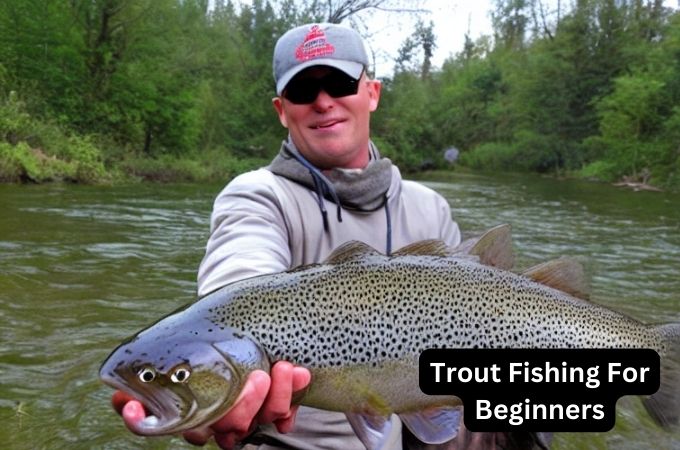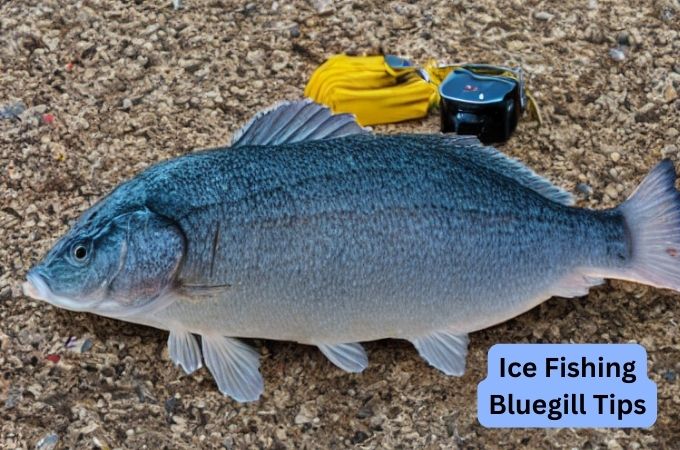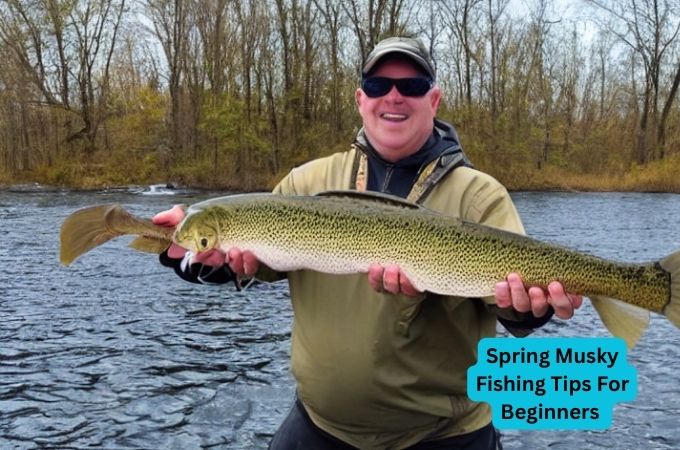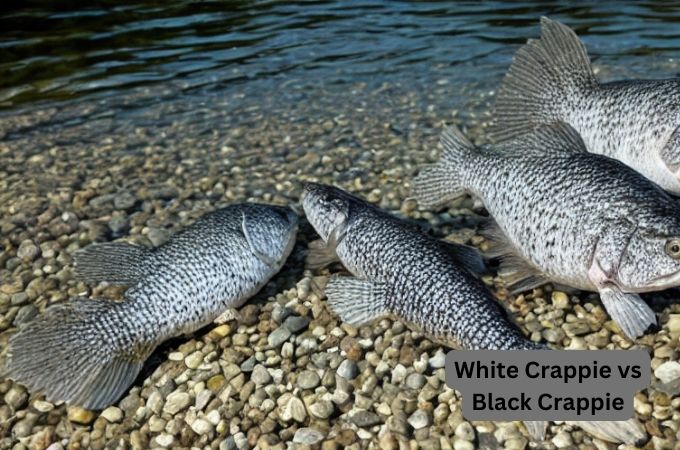Trout Fishing For Beginners | Complete Guides to Start
Today is topic Trout Fishing For Beginners. There are many types of fish that have gained popularity because of how easy it is to find, catch and cook them. What else do you need fish for? The most popular fish are the ones that can be farmed so that we can get abundant quantities of them.
There are many types of fish that fit some of the needs, but only one that ticks all the boxes. And that one is the trout. It is that one freshwater fish that needs just a bit of cold water to survive and thrive while being easy to catch for fun or food.
We will try to get you started on the basics of catching trout, which will include some simple knowledge of trout behavior and then some things that you can do to catch them easily.
Trout Fishing For Beginners: You Should Follow These
Trout Knowledge.
Let’s talk about basic trout knowledge first. We already mentioned that trout are found mostly in areas of colder water. These are freshwater fish, so they live exclusively in lakes and rivers, though some types of trout are exceptions. Steelhead freshwater dwellers are known as rainbow trout.
Appearance.
Trout have a different color based on the environment that they live in. This chameleon-like property helps them hide in the water to prevent being food, for predators and humans alike.
Location.
Trout habitat temperatures are generally between 50 to 60 degrees Fahrenheit and are often clear waters. There are many migratory species of trout, which live in the sea but reproduce in freshwater. Trout is naturally found in the U.S. and Canada and some parts of Asia and Europe.
Diet.
Most trout are carnivores, preying on smaller fish and water insects. Bugs like flies and water dwellers like mollusks are some examples of food eater by trout. Lake trout often feed on miniature water animals too. Overall, their diet consists of:
- Shrimps
- Mealworms
- Bloodworms
- Insects
- Eel
Habitat.
Now, let’s think of where trout may dwell in the water. Most of the trout spawn in fast-moving, shallow water. These are areas where some kind of rock is underneath, causing water depth to reduce and speed up as a result. These are good spots because areas where food is available.
Trout are plentiful in runs, which have a medium speed of water flow and are somewhat deep. These are far more stable and with enough safety in place, you are guaranteed to find trout in them.
Pools in streams go deep and often do not have sufficient light for people to see through. This is where the large trout take a nap halfway through the day.
And of course, some trout like under ice in really cold areas. They live up to 8 feet deep but come to shallower waters once winter hits.
Types.
There are 6 basic types of trout that you can find.
- Brook trout
- Cutthroat trout
- Bull trout
- Golden Trout
- Rainbow trout
- Lake trout
With all that said, let’s talk about the to-do list.
Before You Fish.
You need to get some things done before you fish. First of all, let’s talk about the kind of bait to use. You saw what their diet consists of. With that in mind, you can choose which you want to use. Your options are waxworms, corn worms, nymphs, mayflies, worms, and if you are lavish with spending, red caviar of salmon.
The first thing you have to check, to your surprise, isn’t the bait though. Take a guess as to what it is before you continue…………
……….. it is your hand. Or more specifically, what your hand smells like. Fish like trout do not go for food simply based on what they see, but on what they smell. The odor from your hands can easily go to the lure and ‘contaminate’ it. Before you know it the trout will have alarm bells ringing, leaving you without a bite.
The solution to this is very simple though. Give your hands a ‘natural’ odor by brushing them against nature’s creations. Simply rubbing a leaf or some dirt onto your hands will do the trick.
With that out of the way, we get into the nitty-gritty details of the fishing gear.
Fishing Gears:
Fishing Line.
The first thing that you think of in terms of gear is the fishing line. Because trout live in cooler waters, many of the lines that are braided or color are easily seen by trout. Once they see something that looks foreign to their eyes, they will avoid it at all costs.
To overcome this issue, the first property of a line that you should be looking at is how well it mixes with the water. Most braided lines are known for being bright and visible so it may be best to avoid them.
Monofilament lines, on the other hand, are often made with this in mind. Find the right color and get a monofilament one, and extra brownie points for you if you manage to find one specially designed for camouflage.
Next, let’s think of the weight your fishing line should be able to carry. Most beginners have the tendency to think that the stronger the line, the better. But that just isn’t true. The ideal strength is where your weight limit fits right with the fish.
If your line is significantly stronger, it means the line is also very heavy. The ideal weight everyone recommends for trout fishing is a modest 4-pound test, with a maximum of 6-pound test for braided lines. Anything more than that is more than you will ever need, and it will really slow you down a lot.
Let’s think of the leader length of your cast next. Should you have it long or short? And why is that something I should even consider?
For starters, the length of the leader will determine two critical things, how easy it is to control the line and how easy it is for the fish to see it.
Shorter ones will help you control the line more effectively. This is because more of your energy ends up going to the tip of the line, so whatever you make it do, it does so more precisely. With longer lines, it tends to follow the general direction without accurately doing what you want it to do.
However, shorter leader lengths will mean that the distance between the fly and the fly line is lower; it becomes more visible to the fish in the water. Likewise, longer leader lengths make it difficult for fish to see the line, making it a plus point.
But there’s more. How big should your flight be? Larger files make it difficult to maneuver the line, but make it too short and the wind puts it away.
What should you do? Find the right balance for everything of course! The sad truth is it will take some time, so once you are there do experiment a bit to find what suits you. But do remember, the kind of water will shift the balance quite a bit as well. Clearer water will need better camouflage, which means longer leader length. You get the idea.
Fishing Rod.
Next, we get to the fishing rod. We already established that trout can sense a bait through smell, so what does that say about their other senses? Well, let’s just say they are the kind who would sound the alarm quite easily. Needless to say, then, the rod you need should be ‘mild’.
Generally speaking, the ideal trout fishing rod should be an ultralight rod. The lower weight not only makes it easy to maneuver, but it also goes well with the lighter fishing lines. At the end of the day, catching trout does not require a lot of energy to be used.
However, the real question is what kind of rod should you use for trout fishing? Most people recommend using a spinning rod for the job because they tend to be easier to manage than fly rods. You can also get away with a shorter spinning rod for trout fishing.
On par with the lightweight nature of trout fishing, it must also have fast action. But that was quite obvious, wasn’t it? Fast action will transfer the tug from a trout biting the bait to your hands quickly and more efficiently so you can react fast to it. And your reaction will immediately pull on the trout too.
The corresponding power on the rod, then, is obvious, isn’t it? The rod should have light power! Again, light power will help you get a better response on the rod, therefore letting you react to it swiftly and also pulling fish up fast.
But before we finish talking about rods, just remember that you CAN use a fly rod as well, though they will have to be quite long and with a floating or weight-forward line with them. But we still recommend using a spin rod!
Bait.
Trout are simple fish. They see food, they go bite. This means you get a whole bunch of options when it comes to selecting the bait. We learned that they have a special taste bud for small, living beings, which makes it even better when choosing bait.
Most trout can be easily caught not by the live bait though, but by imitators. Even simple things such as spoons and minnow baits work on the trout, as well as pieces of fish or small insects.
Of course, if you are feeling a bit generous, you could turn it up a notch. Why not go for dough or power bait, or even some red caviar while you are at it? Not that it means much, because results will be the same.
Miscellaneous Tools.
Apart from the main tools, there are some extras that you should carry just to make your life easier, especially because you are new to the game. Once you become more skilled, you can let some of these go.
Wading Gear.
No, fishing in the river isn’t remotely as close to swimming in the river. And fishing for trout in the rivers is a good way of getting trout because, in shallower water, you can really cover a lot of fish resting grounds.
The fact that they reside in really cold waters tells you that going skinny dipping for fish isn’t an option either! The best way to do this, then, is to have gear ideal for wading in the cold water. All you need are a pair of hip boots, or chest waders to keep your body alright. And if you don’t fancy that, why don’t you take a dip in the cold water first? What’s that? Didn’t think so.
Fishing Vest.
Fishing vests aren’t really there for protecting you from the elements as much as they are for taking things. They often have space on your back and a generally high capacity to keep a lot of things.
These vests are also quite affordable for what they give. Obviously, they are waterproof, but they also have space to keep many things close at hand, which would be a serious pain to carry. While it may not seem much, having WHAT you need within reach can really help WHEN you actually need it.
Landing Net.
Another handy thing to carry with you. Landing nets are basically the nets with handles and a circular ring with the net at the end of it. Trout, like all fish, are slimy and feisty. They know when they are about to be taken away for being turned into your next meal, so they will certainly fight it.
Immediately after taking them off the reel, don’t try and hold them. They will fall off. Take them into the landing net, and you are good to take them anywhere else.

Some Final Tips:
Of course, you need to do a bit of fishing yourself; the equipment won’t do it for you. While anyone should know the basics of dropping the lure into the water, waiting for the trout to bite, pulling it off the water, and getting the catch, you do need to know a few more things for trout fishing for beginners.
- Trout are feisty, so be ready for a fight
- Don’t rush to pull the reel out of the water, let the trout get stuck first
- Don’t throw non-bait into the water, it scares trout off
- Hold the rod still while waiting for the trout to bite
Happy fishing, fella!





